EXECUTIVE SUMMARY
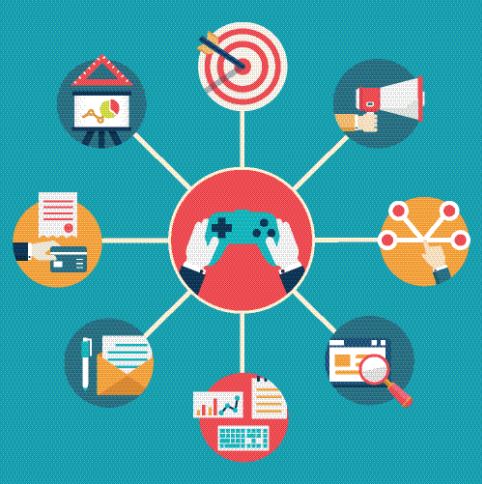
Shopping has evolved to be more than just the acquisition of food, clothing, and other necessities. Once one’s needs for air, water, food, shelter and safety have been satisfied, then the higher-level needs for love, esteem, and self-actualization become paramount. Shopping can provide for these needs, as well as serving as a hobby, an enjoyable pastime, and even a competitive sport, where shoppers seek out bargains, unusual items, or seek not to spend any money at all. Yet for many, shopping has become an unpleasant experience, due to crowds, dimly lit stores, the lack of trained salespeople, and so on.
Retailers are introducing many new methods for improving the shopping experience. One is just that: trying to make a day of shopping more of an experience than just the acquisition of goods. Retailers are also trying to combine the online and physical experiences to benefit from the move to online and offer a seamless shopping encounter. One way to increase customer interest and distraction when shopping is through the use of ideas and images from the immersive video-gaming world. Gamification makes use of human psychology and emotional desires to enhance customer engagement and loyalty and has been demonstrated to increase revenues and achieve corporate goals with impressive results, even in flat or slow-growing markets.
WHAT IS GAMIFICATION?
Gamification is the use of elements from computer and video games in real-world or other activities, particularly elements that people find to be fun or addictive. These elements stimulate our psychological needs for desire, incentive, challenge, achievement and rewards, feedback, and mastery. Common examples of ideas borrowed from video games are badges, levels and leaderboards.
Elements employed fall within the categories of validation, completion and prizes, and these elements play to our competitive urges and our need for achievement and validation from our peers. Examples include:
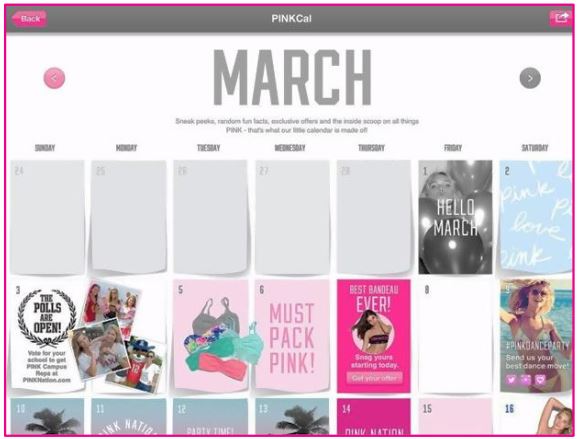
- Validation—Likes, retweets, leader boards and follower counts;
- Completion—Completing levels or progress bars; and
- Prizes—Status and points (such as frequent-flyer miles), badges and lotteries.
Techniques can be targeted to appeal to each of a person’s personality types' desires and weaknesses. The octalysis tool below illustrates the types of awards and prizes that appeal to given desires:
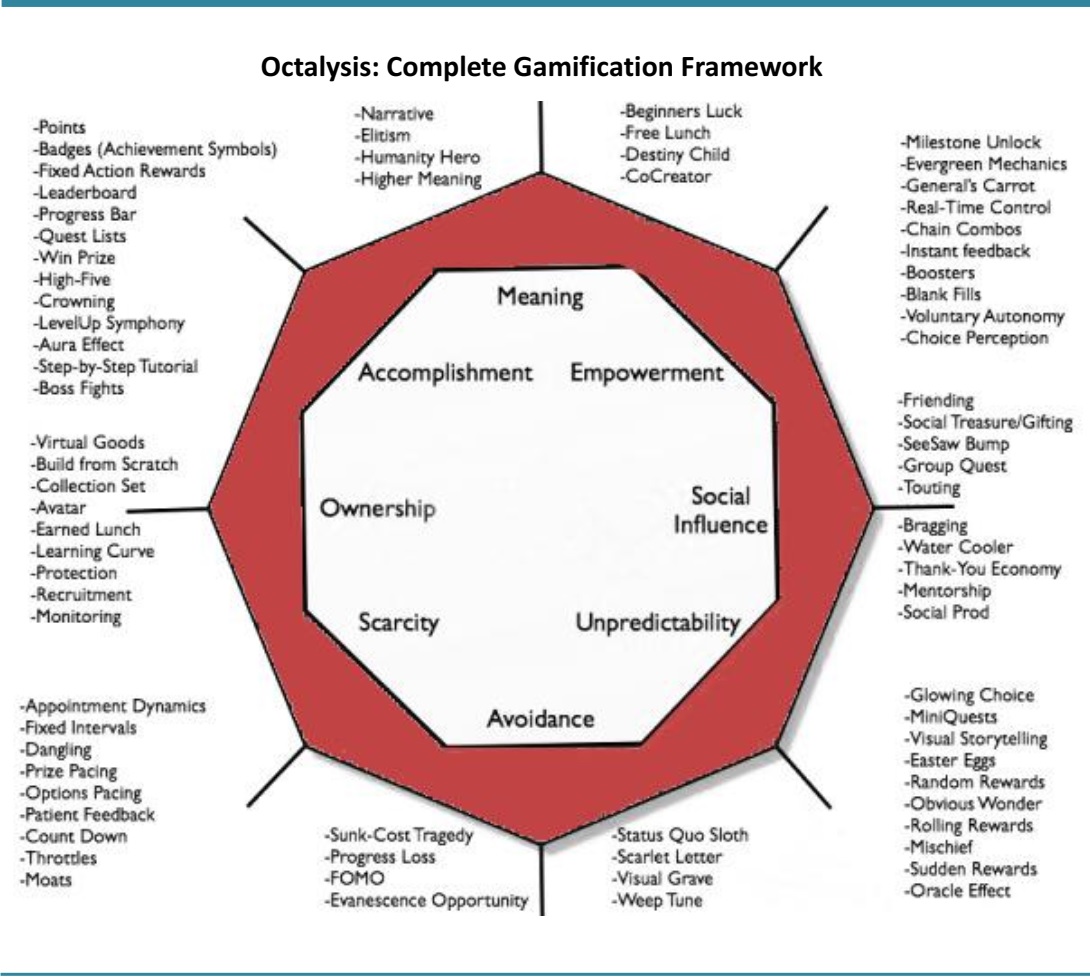
Source: Yu-kai Chou
GAME MECHANICS AND DYNAMICS

To make a game fun, engaging and satisfying, game designers employ game mechanics (actions, processes, and controls) that generate the emotions we feel, called game dynamics.

Source: Bunchball
Game MECHANICS include:

- Points are strong motivators. There can be different categories, and points can be used to show status, to unlock new levels, or be spent on awards. With points, people just like the feeling or receiving something.
- Levels include frequent-flyer categories, ranks for Boy Scouts and titles at a company. Levels indicate the passage of a milestone.
- Challenges, trophies, badges, and achievements provide a mission to accomplish and the recognition for having achieved it. Trophies, badges and achievements serve the purpose of demonstrating one’s success to others.
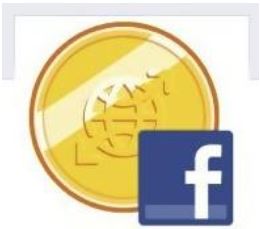 Virtual goods are intangible objects that are purchased for use in online games and form the basis for a virtual economy. Game players purchase clothing, ammunition, and other items to enhance their virtual identity and for their friends and competitors to admire.
Virtual goods are intangible objects that are purchased for use in online games and form the basis for a virtual economy. Game players purchase clothing, ammunition, and other items to enhance their virtual identity and for their friends and competitors to admire.- Leaderboards make use of a list of top scores from gaming to show how a player stacks up against his or her peers.
- Competitions give the winner trophies and prizes along with the associated bragging rights.
Game DYNAMICS include:
 Rewards have a strong basis in human behavior and commerce: receiving something of value for an action or something else of value. In games, players receive points, levels, and virtual goods for their actions.
Rewards have a strong basis in human behavior and commerce: receiving something of value for an action or something else of value. In games, players receive points, levels, and virtual goods for their actions.- Status is a form of recognition that all people crave. It can take the form of fame, prestige, recognition, attention, and respect. Levels in games indicate status.
- Achievement fulfils a need that all people have: to take on a challenge and to succeed, with the satisfaction of the achievement or receiving recognition associated with it.
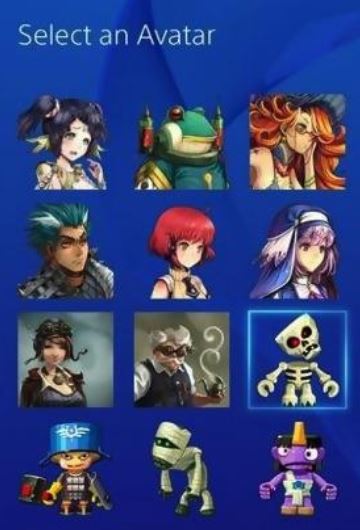
- Self-expression represents people’s need to be a unique individual, to have one’s own personality or style, or through membership in a group. Gamers can modify their online appearance to show their true envisioned selves.
- Competition is a strong motivator for many, either by defeating competitors or competing against oneself, in order to have the feeling of satisfaction from one’s position on a leaderboard.
- Altruism is the powerful feeling of satisfaction individuals feel from committing selfless acts.
ENGAGEMENT AND LOYALTY
Gamification seeks to increase engagement and loyalty. Forrester researcher Elizabeth Shaw defined the four “i”s of engagement:
- Involvement—Gamification increases user participation, which results in a greater number of returns to the site, as well as new visitors and registrations.
- Interaction—Gamification enables consumers to interact with products, which increases the likelihood of a sale.
- Intimacy—Gaming strategies can build a relationship between consumers and products through entertainment and awards.
- Influence—Offering awards and tokens give consumers greater influence and opportunities to introduce the product within their social circles.
Customer loyalty is gained through traditional rewards with monetary value such as points, discounts or coupons, but also from intangible benefits such status, exclusivity, and visibility within one’s community.
WHO CAN USE GAMIFICATION?
Gamification can be used to motivate many types of people—customers, employees, fans, patients, and other stakeholders—and it can be used to generate many kinds of behavior. It can also be used internally and externally in an organization. The graphic below illustrates potential applications for gamification:
Potential Applications for Gamification
 Source: Bunchball
Source: Bunchball
For example:
- A sales organization can use gamification to grow revenues and achieve a desired product mix
- Call centers or support desks can use gamification to improve customer satisfaction
- Gamification can be used for employee training
- Patients can receive incentives for healthy living to reduce the cost of healthcare
Providers of gamification services for corporate applications include:


was founded in 2005 is considered the visionary market leader in gamification. Its solutions have motivate more than 125 million users to complete more than 20 billion actions on behalf of 300 customers, which include ABC, Adobe, Bravo, CBS interactive, Cisco Systems, ESPN, NBC, Marriott, T-Mobile, Toyota and T. Rowe Price.
Market research shows the rapid adoption of gamification within enterprises. Gartner predicts that 70% of the top 2,000 global organizations will use gamification for organizational change by 2014, versus 20% in 2012. In 2011, 91% of gamification was customer-facing; in 2012, customer-facing gamification had fallen to 62%, with business facing applications rising to a 38% share.
Success Stories
There are numerous success stories from the use of gamification, including:
- Cisco Systems used gaming strategies in its call centers to reduce call time by 15% and increase sales by approximately 10%
- Domino’s Pizza created an app called Pizza Hero that lets customers create their own pizza, driving a 30% sales increase
- Hewlett-Packard’s Project Everest offered rewards and prizes to reseller teams, which generated a $1 billion (56.4%) increase in revenue
- Teleflora created a gamified social engagement scheme offering, and Facebook increasing traffic increased 105% and conversion rates increased 92%
In addition to increased sales or improved product mix, one significant additional benefit of customer participation in the opportunity for the vendor to obtain valuable data on customer preferences, purchasing intentions and other information.
Gamification has its opponents and detractors, who claim it is a fad, “evil” or ineffective, which stands in contrast to many successful applications, including:
- Since 2010, more than 350 companies have launched major gamification projects, including: Adobe, Ford, MLB, NBC, Panera Bread, Southwest Airlines, Walgreens and Threadless, among many others.
- One industry expert estimated that gamification can raise customer engagement and by an average of 30% and another expert measured a 60% increase in employee engagement.
THE MARKET
According to M2 research, the gamification market was approximately $100 million in 2011 to nearly $2.8 billion in 2016 from $100 million in 2011, a CAGR of more than 200%, as depicted in the graph below.
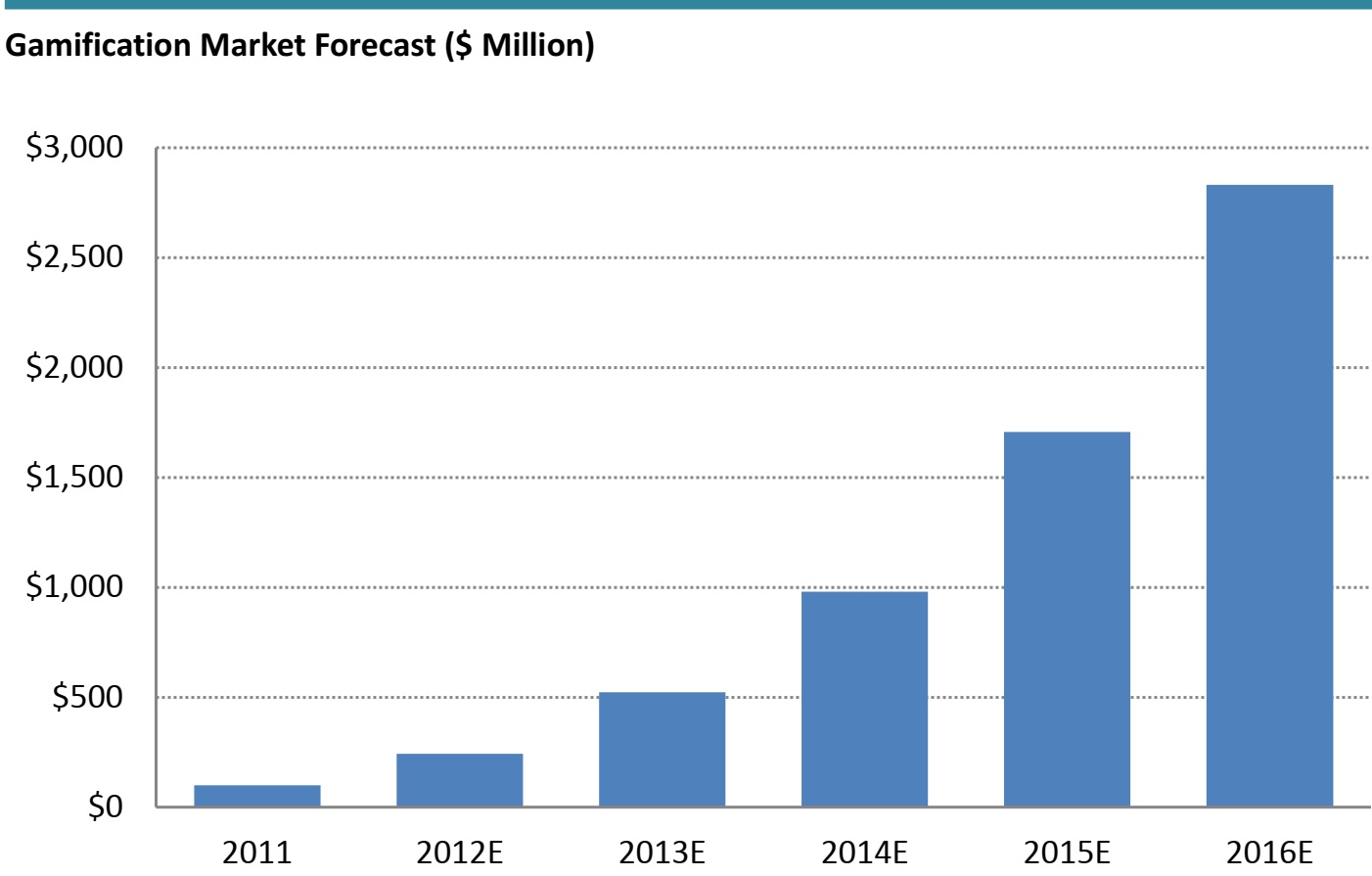
Source: M2 Research
The largest segment of the market was enterprise, with nearly one quarter of the market. The top three implementations of gamification were: user engagement (47%), brand loyalty (22%) and brand awareness (15%). The full breakdown is as follows:
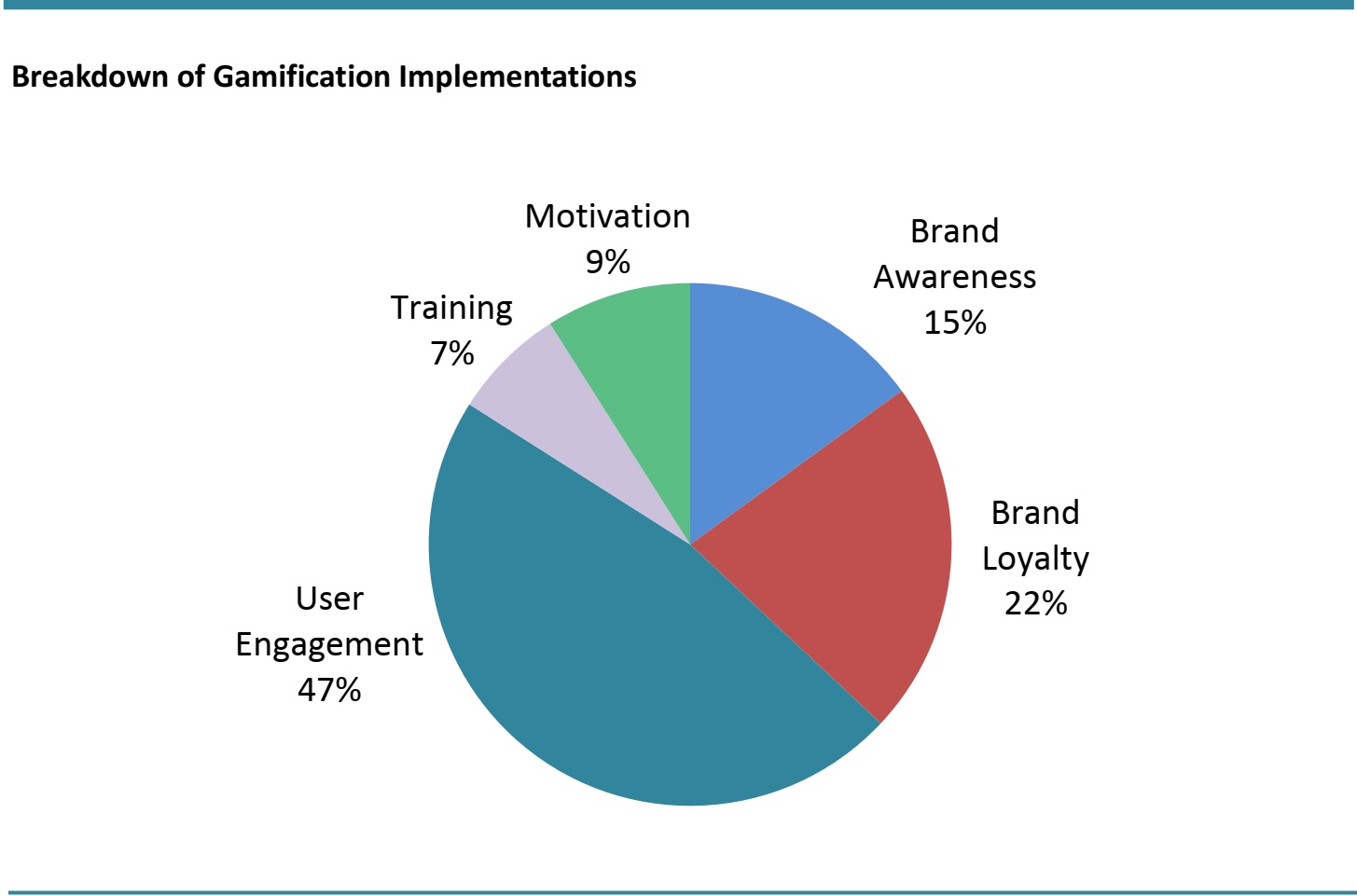
Source: M2 Research
GAMIFICATION IN RETAIL
Our consumer behavior is influenced by gamification every time we check in at a restaurant on Facebook, check our frequent-flyer mile balance or buy that extra cup of coffee to receive a gold star at Starbucks. Below we discuss some successful applications of gamification in retail.
L Brands. PINK Nation (part of Victoria’s Secret) held an in-application scavenger hunt during Spring Break 2014, where the company distributed promotions and prizes to its target college-age female demographic. Its current app uses several game elements, such as points and badges with links to invite one’s friends.
Home Shopping Network. HSN’s iPhone app takes on a slot-machine look, and members can spin the wheel up to 10 times a day to win a prize, while receiving offers for discounts on products.
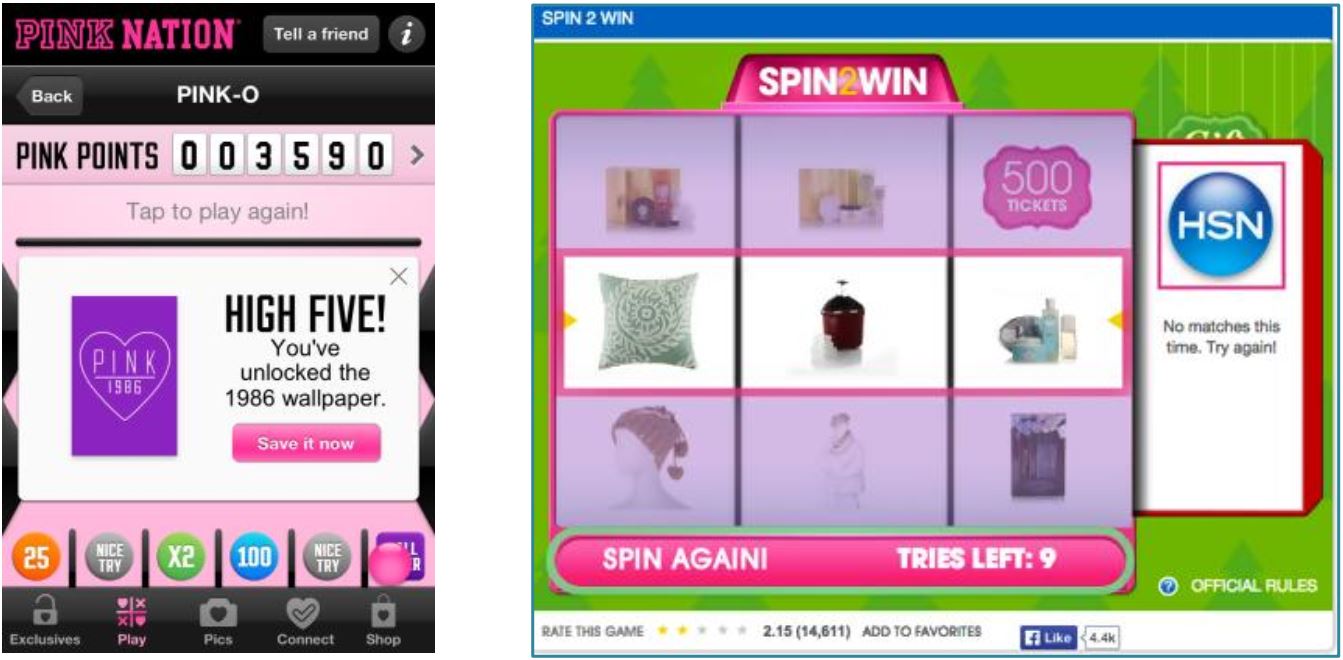 JewelMint
JewelMint. This company’s website has three sections—JewelMint for jewelry, StyleMint for clothing and ShoeMint for footwear. The site’s Facebook page cleverly combines the features of social media and gamification with points, rewards, participation through voting, a leaderboard, as well as the opportunity for members to gain visibility by being ranked by their peers.
Gilt. Gilt works like a sample sale for its “insider” members, providing them with a heavy discount on a limited assortment of luxury items for a limited time, which creates a sense of urgency to visit the website early and often. Gilt Noir is the loyalty program for the top 1% of Gilt shoppers, and members receive a welcoming gift, which increases the feeling of belonging, as well as early access to sales. Members have developed their own gaming strategies, such as signing up on wait lists, hoarding items in their shopping carts, and browsing first the sales that are about to end.
 Ebay
Ebay. The company is a pioneer in gamification through its competitive bidding system, which unlocks our inner desire to compete with and defeat complete strangers as we bid and track our bidding in an online auction. Members also provide and receive feedback and ratings on other members after completing a transaction.
THE FUTURE: WILL ‘APPLE PAY’ TAKE THE GAMIFICATION OF RETAIL EVEN FURTHER?
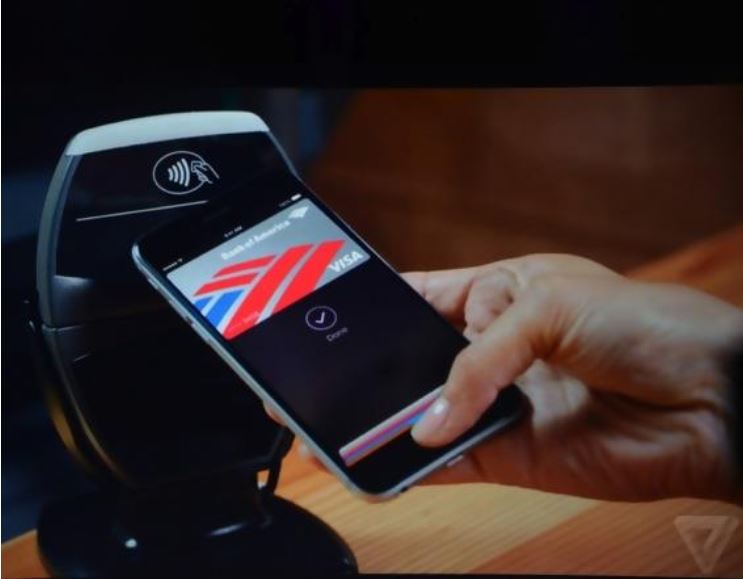
One feature of gamification is the redirection of the consumer’s attention from buying a product to competing and playing a game, erasing the boundary between shopping and payment. It is already easy to make a comparison between online shopping and playing a video game, since the shopping process takes place on a PC (or smartphone), and the transaction is completed after a few clicks, with no paper money or credit cards changing hands.
Enter Apple Pay, which was launched on October 20, 2014. Apply pay disaggregates shopping and paying even further, enabling consumers to make payments with their iPhone 6 or 6-Plus by placing their phone in the proximity of a payment terminal and putting their finger on the fingerprint sensor. The purchasing process is much like pressing a button on the TV remote control or on a video game controller. In the transaction, again neither physical money nor credit cards change hands. Thus, shopping is becoming more and more like the virtual worlds within video games.
History of Gamification
Gamification has its roots in the 19th century with the launch of S&H Green Stamps. Green stamps were given out for purchases at grocery stores and could be collected in dedicated books and redeemed for household items. Consumers were incented to shop at merchants offering green stamps and to buy more in order to accumulate enough stamps to purchase their desired goods from a catalog.
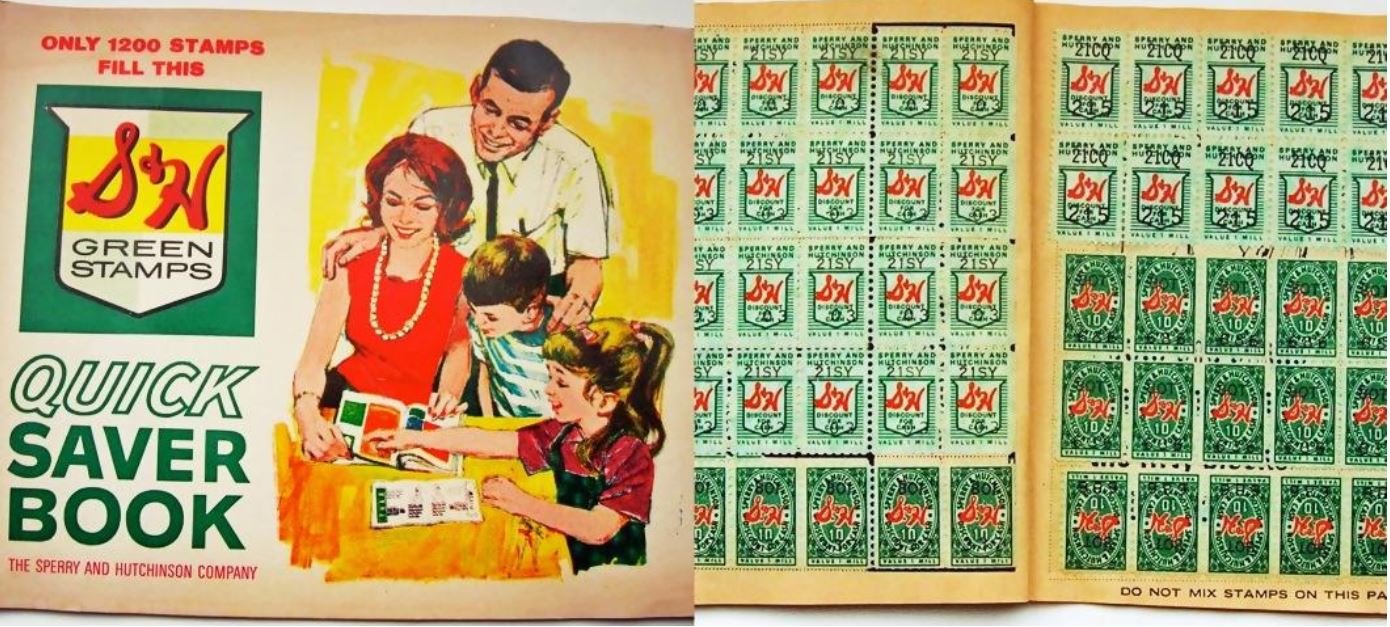
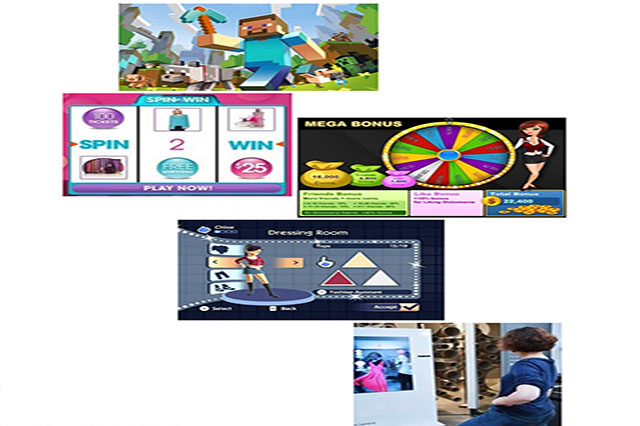
 Shopping has evolved to be more than just the acquisition of food, clothing, and other necessities. Once one’s needs for air, water, food, shelter and safety have been satisfied, then the higher-level needs for love, esteem, and self-actualization become paramount. Shopping can provide for these needs, as well as serving as a hobby, an enjoyable pastime, and even a competitive sport, where shoppers seek out bargains, unusual items, or seek not to spend any money at all. Yet for many, shopping has become an unpleasant experience, due to crowds, dimly lit stores, the lack of trained salespeople, and so on.
Retailers are introducing many new methods for improving the shopping experience. One is just that: trying to make a day of shopping more of an experience than just the acquisition of goods. Retailers are also trying to combine the online and physical experiences to benefit from the move to online and offer a seamless shopping encounter. One way to increase customer interest and distraction when shopping is through the use of ideas and images from the immersive video-gaming world. Gamification makes use of human psychology and emotional desires to enhance customer engagement and loyalty and has been demonstrated to increase revenues and achieve corporate goals with impressive results, even in flat or slow-growing markets.
Shopping has evolved to be more than just the acquisition of food, clothing, and other necessities. Once one’s needs for air, water, food, shelter and safety have been satisfied, then the higher-level needs for love, esteem, and self-actualization become paramount. Shopping can provide for these needs, as well as serving as a hobby, an enjoyable pastime, and even a competitive sport, where shoppers seek out bargains, unusual items, or seek not to spend any money at all. Yet for many, shopping has become an unpleasant experience, due to crowds, dimly lit stores, the lack of trained salespeople, and so on.
Retailers are introducing many new methods for improving the shopping experience. One is just that: trying to make a day of shopping more of an experience than just the acquisition of goods. Retailers are also trying to combine the online and physical experiences to benefit from the move to online and offer a seamless shopping encounter. One way to increase customer interest and distraction when shopping is through the use of ideas and images from the immersive video-gaming world. Gamification makes use of human psychology and emotional desires to enhance customer engagement and loyalty and has been demonstrated to increase revenues and achieve corporate goals with impressive results, even in flat or slow-growing markets.


 To make a game fun, engaging and satisfying, game designers employ game mechanics (actions, processes, and controls) that generate the emotions we feel, called game dynamics.
To make a game fun, engaging and satisfying, game designers employ game mechanics (actions, processes, and controls) that generate the emotions we feel, called game dynamics.

 Virtual goods are intangible objects that are purchased for use in online games and form the basis for a virtual economy. Game players purchase clothing, ammunition, and other items to enhance their virtual identity and for their friends and competitors to admire.
Virtual goods are intangible objects that are purchased for use in online games and form the basis for a virtual economy. Game players purchase clothing, ammunition, and other items to enhance their virtual identity and for their friends and competitors to admire. Rewards have a strong basis in human behavior and commerce: receiving something of value for an action or something else of value. In games, players receive points, levels, and virtual goods for their actions.
Rewards have a strong basis in human behavior and commerce: receiving something of value for an action or something else of value. In games, players receive points, levels, and virtual goods for their actions.
 Source: Bunchball
Source: Bunchball


 JewelMint. This company’s website has three sections—JewelMint for jewelry, StyleMint for clothing and ShoeMint for footwear. The site’s Facebook page cleverly combines the features of social media and gamification with points, rewards, participation through voting, a leaderboard, as well as the opportunity for members to gain visibility by being ranked by their peers.
Gilt. Gilt works like a sample sale for its “insider” members, providing them with a heavy discount on a limited assortment of luxury items for a limited time, which creates a sense of urgency to visit the website early and often. Gilt Noir is the loyalty program for the top 1% of Gilt shoppers, and members receive a welcoming gift, which increases the feeling of belonging, as well as early access to sales. Members have developed their own gaming strategies, such as signing up on wait lists, hoarding items in their shopping carts, and browsing first the sales that are about to end.
JewelMint. This company’s website has three sections—JewelMint for jewelry, StyleMint for clothing and ShoeMint for footwear. The site’s Facebook page cleverly combines the features of social media and gamification with points, rewards, participation through voting, a leaderboard, as well as the opportunity for members to gain visibility by being ranked by their peers.
Gilt. Gilt works like a sample sale for its “insider” members, providing them with a heavy discount on a limited assortment of luxury items for a limited time, which creates a sense of urgency to visit the website early and often. Gilt Noir is the loyalty program for the top 1% of Gilt shoppers, and members receive a welcoming gift, which increases the feeling of belonging, as well as early access to sales. Members have developed their own gaming strategies, such as signing up on wait lists, hoarding items in their shopping carts, and browsing first the sales that are about to end.
 Ebay. The company is a pioneer in gamification through its competitive bidding system, which unlocks our inner desire to compete with and defeat complete strangers as we bid and track our bidding in an online auction. Members also provide and receive feedback and ratings on other members after completing a transaction.
Ebay. The company is a pioneer in gamification through its competitive bidding system, which unlocks our inner desire to compete with and defeat complete strangers as we bid and track our bidding in an online auction. Members also provide and receive feedback and ratings on other members after completing a transaction.
 One feature of gamification is the redirection of the consumer’s attention from buying a product to competing and playing a game, erasing the boundary between shopping and payment. It is already easy to make a comparison between online shopping and playing a video game, since the shopping process takes place on a PC (or smartphone), and the transaction is completed after a few clicks, with no paper money or credit cards changing hands.
Enter Apple Pay, which was launched on October 20, 2014. Apply pay disaggregates shopping and paying even further, enabling consumers to make payments with their iPhone 6 or 6-Plus by placing their phone in the proximity of a payment terminal and putting their finger on the fingerprint sensor. The purchasing process is much like pressing a button on the TV remote control or on a video game controller. In the transaction, again neither physical money nor credit cards change hands. Thus, shopping is becoming more and more like the virtual worlds within video games.
One feature of gamification is the redirection of the consumer’s attention from buying a product to competing and playing a game, erasing the boundary between shopping and payment. It is already easy to make a comparison between online shopping and playing a video game, since the shopping process takes place on a PC (or smartphone), and the transaction is completed after a few clicks, with no paper money or credit cards changing hands.
Enter Apple Pay, which was launched on October 20, 2014. Apply pay disaggregates shopping and paying even further, enabling consumers to make payments with their iPhone 6 or 6-Plus by placing their phone in the proximity of a payment terminal and putting their finger on the fingerprint sensor. The purchasing process is much like pressing a button on the TV remote control or on a video game controller. In the transaction, again neither physical money nor credit cards change hands. Thus, shopping is becoming more and more like the virtual worlds within video games.

